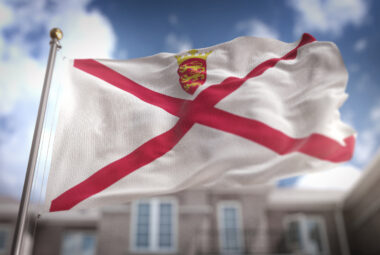Perhaps ASDA should have gone to Specsavers (and asked for consent)
Posted onThe Court of Appeal has delivered a decision in the long running trade mark battle between Specsavers and ASDA. This brings about the conclusion of a case which has been ongoing for over six years and sees Specsavers defend the validity of one of their registrations, despite not showing use of the mark as such.
The story so far
The dispute between ASDA and Specsavers began when ASDA, one of the UK’s largest supermarkets, ran a marketing campaign to promote its own optician services, using the logo shown above on the left.
ASDA also used the slogans BE A REAL SPEC SAVER AT ASDA and SPEC SAVINGS AT ASDA.
In response to ASDA’s advertising campaign Specsavers brought proceedings against ASDA both for trade mark infringement and passing off on the basis of their trade mark registrations for the word mark SPECSAVERS and their two logo marks as shown above on the right.
The first Specsavers mark was known in the proceedings as the “shaded mark” and the second Specsavers mark was known in the proceedings as the “wordless mark”.
In 2010 the High Court found in Specsavers’ favour in respect of ASDA’s use of the strapline BE A REAL SPEC SAVER AT ASDA. The High Court determined use of this slogan took unfair advantage of the distinctive character or repute of ASDA’s word mark; however, they rejected the claim of infringement and passing off in respect of ASDA’s use of the logo. This was particularly interesting bearing in mind it came out during the proceedings that some of ASDA’s internal marketing materials were described as ‘Specsavers rip-off’.
The High Court also held Specsavers’ wordless mark should be revoked on the grounds of non-use.
Unsurprisingly, Specsavers appealed and in 2012 the Court of Appeal largely found in favour of Specsavers, allowing the appeal on the basis that ASDA’s logo and both slogans infringed Specsavers’ rights.
However, the Court of Appeal stayed Specsavers’ appeal in respect of the High Court’s decision to revoke their wordless mark on the grounds of non-use to seek guidance from the Court of Justice of the European Union (CJEU).
Why a non-use revocation action?
Article 51(1)(a) of Council Regulation (EC) No 207/2009/EC (the “Regulation”) provides that if within the five years following registration of a Community trade mark (CTM) the proprietor has not put the mark into genuine use in connection with the registered goods or services, the mark will be revoked. Use of the mark includes use of the mark in the form as registered but also could be use in a form differing from that as registered but which does not alter the distinctive character of the mark as registered.
Nobody disputed that the shaded mark was in use; the question at issue here was whether use of the shaded mark was sufficient to maintain the registration of the wordless mark. The High Court was of the opinion that this was not the case, when Mann J held that to the average consumer the addition of the word “Specsavers” altered the distinctive character of the wordless logo mark from that as registered.
The Court of Appeal sought assistance from the CJEU on the legal issue as to whether the use of a superimposed word mark over a graphical logo could amount to genuine use of a CTM as registered without the superimposed word.
CJEU’s decision
In 2013 the CJEU held that genuine use under the Regulation can be fulfilled:
”… where a Community figurative mark is used only in conjunction with a Community word mark which is superimposed over it, and the combination of those two marks is, furthermore, itself registered as a Community trade mark, to the extent that the differences between the form in which that trade mark is used and that in which it was registered do not change the distinctive character of that trade mark as registered. ”
Following this judgment, the parties settled their dispute on confidential terms. However, Specsavers did pursue the appeal of the High Court’s decision to revoke their wordless mark.
I can see clearly, now the judgement’s in…
In its judgment (Specsavers & Others v Asda Stores [2014] EWCA Civ 1294) the Court of Appeal addressed two questions:
- Whether the use made by Specsavers of the wordless mark was genuine use, such that the wordless mark serves to identify the goods and services of Specsavers; and
- Whether the differences between the form of the wordless mark as registered and its use in the shaded mark form changed the distinctive character of the mark.
The Court of Appeal found that Specsavers had put the wordless mark to genuine use through use of their shaded logo. In support of its decision, the Court noted:
- Specsavers had made substantial use of the shaded mark since around 1995 and it had featured heavily in all aspects of the business, including interior and exterior signage, in-store materials, advertising and marketing.
- Both Specsavers’ wordless and shaded marks were sufficiently different in design from any logo used by competitors. Specsavers were the only company to be using a trade mark of this type; there was nothing else on the market and so it was considered very unique.
- The evidence showing that ASDA was fully aware when creating their campaign that they were creating a ‘rip-off’. The Court noted in designing their campaign ASDA effectively started with the wordless mark and then they separated the ellipses to what they thought would be a safe distance apart.
- Specsavers had registered the wordless mark without any colour limitation and so although it appears black in the representation it is regarded as registered in respect of all colours (in accordance with the earlier judgement in Phones 4u Ltd v Phone4u.co.uk Internet Ltd [2006]).
But do not look through this decision with rose tinted spectacles…
The Registrar of the UK Intellectual Property Office, who was invited to intervene in the hearing and who argued for revocation of the wordless mark, asked that the Court of Appeal make it clear that this decision does not mean that use of a mark with superimposed words in a specific colour will automatically amount to use of the mark as registered without the words. In other words, this does not mean that we should all be filing for the ‘shapes’ of our marks without the additional matter which may also be used with those shapes. The Registrar was keen for it to be made clear that each case must be determined on its own facts.
To this end, Kitchin LJ expressly commented that each and every case must be decided on its own facts and highlighted that this was an unusual case, with Specsavers being supported by convincing evidence, including the fact that there was evidence which pointed to ASDA deliberately looking to allude to Specsavers’ branding.
It would be interesting to know what decision would have been issued had there not been evidence that ASDA was deliberately trying to piggy-back on the Specsavers’ brand. I suspect that next time the decision may not be so ‘spectacle-ularly’ in favour of the trademark owner.



